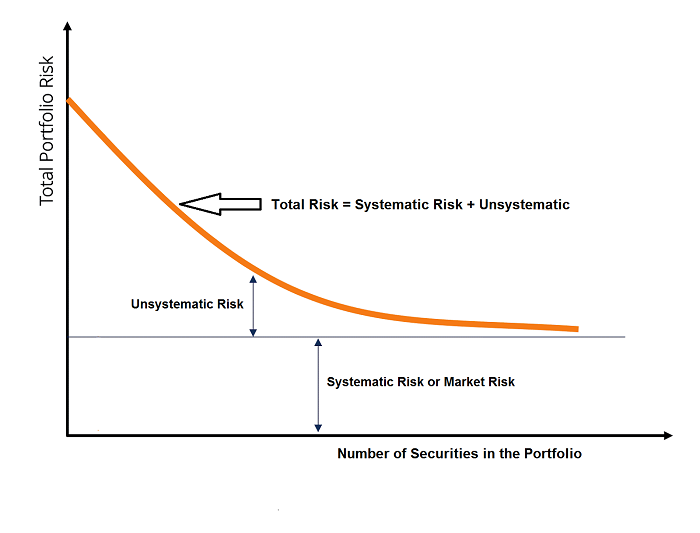
 Data Structure
Data Structure Networking
Networking RDBMS
RDBMS Operating System
Operating System Java
Java MS Excel
MS Excel iOS
iOS HTML
HTML CSS
CSS Android
Android Python
Python C Programming
C Programming C++
C++ C#
C# MongoDB
MongoDB MySQL
MySQL Javascript
Javascript PHP
PHP
- Selected Reading
- UPSC IAS Exams Notes
- Developer's Best Practices
- Questions and Answers
- Effective Resume Writing
- HR Interview Questions
- Computer Glossary
- Who is Who
What is Unsystematic Risk in Finance?
Unsystematic risk is related to the internal risk factors of the organization. It is also called specific risk, idiosyncratic risk, diversifiable risk, or residual risk. An unsystematic risk occurs due to any event for which the business is not prepared, and which disrupts the general and smooth functioning of the firm’s business.
Some of the factors that lead to unsystematic risk are −
The inefficiency of the management
Changes in the capital structure
Liquidity crunch in the business
Flaws in the business model
Production of non-desirable products
Labour strikes
Unsystematic risk can be diversified and so can be avoided. It is a fact that one can diversify their portfolio by buying shares of different firms and also in different geographical locations. This way, when some businesses that one has invested in, face adversity due to unsystematic risk, not all businesses will face the same problem. Hence, the unsystematic risk that is related to one or a couple of stocks can be avoided.

In the graph, total portfolio risk is on the Y-axis, and the number of stocks is on the X-axis. It is clearly visible in the graph that an unsystematic risk is maximum in a portfolio where there is no diversification. But, as one starts investing in more than one stock, the unsystematic risk reduces and approaches zero.
Unsystematic risks can be of the following types −
- Business Risk or Liquidity Risk
- Financial Risk or Credit Risk
- Operational Risk
Business Risk or Liquidity Risk
Business risk, basically, points to the unsystematic risk that addresses the questions of whether the firm will be able to earn a palpable amount of profits to run its businesses operations smoothly. Every business has expenses, and to cover them, there should be a minimum earning that covers the usual expenses. For instance, marketing costs, salaries, etc. So, business loss is an example of unsystematic risk.
Financial Risk or Credit Risk
It is apparent that businesses have to take business loans to grow and cover their operational expenses. If the business cannot pay its obligations in time, it falls into the trouble of financial distress. The inability of meeting the commitments in regard to leverage or loan can be big trouble, which may also lead to insolvency. There are some common factors that can turn a company vulnerable to financial risks, such as −
An interest rate hike often increases the expense suddenly in comparison to the earning
Problems may occur due to less equity financing in comparison to the leverage financing
Management issues in regards to speculation of both expenses and income
Operational Risk
Operational risks imply the loss that every organization should be prepared to bear. It includes all the errors which are natural. The errors can be−
Employee related or human errors
Technical problems related to hardware etc.
Problems related to using of old processes or machines.

